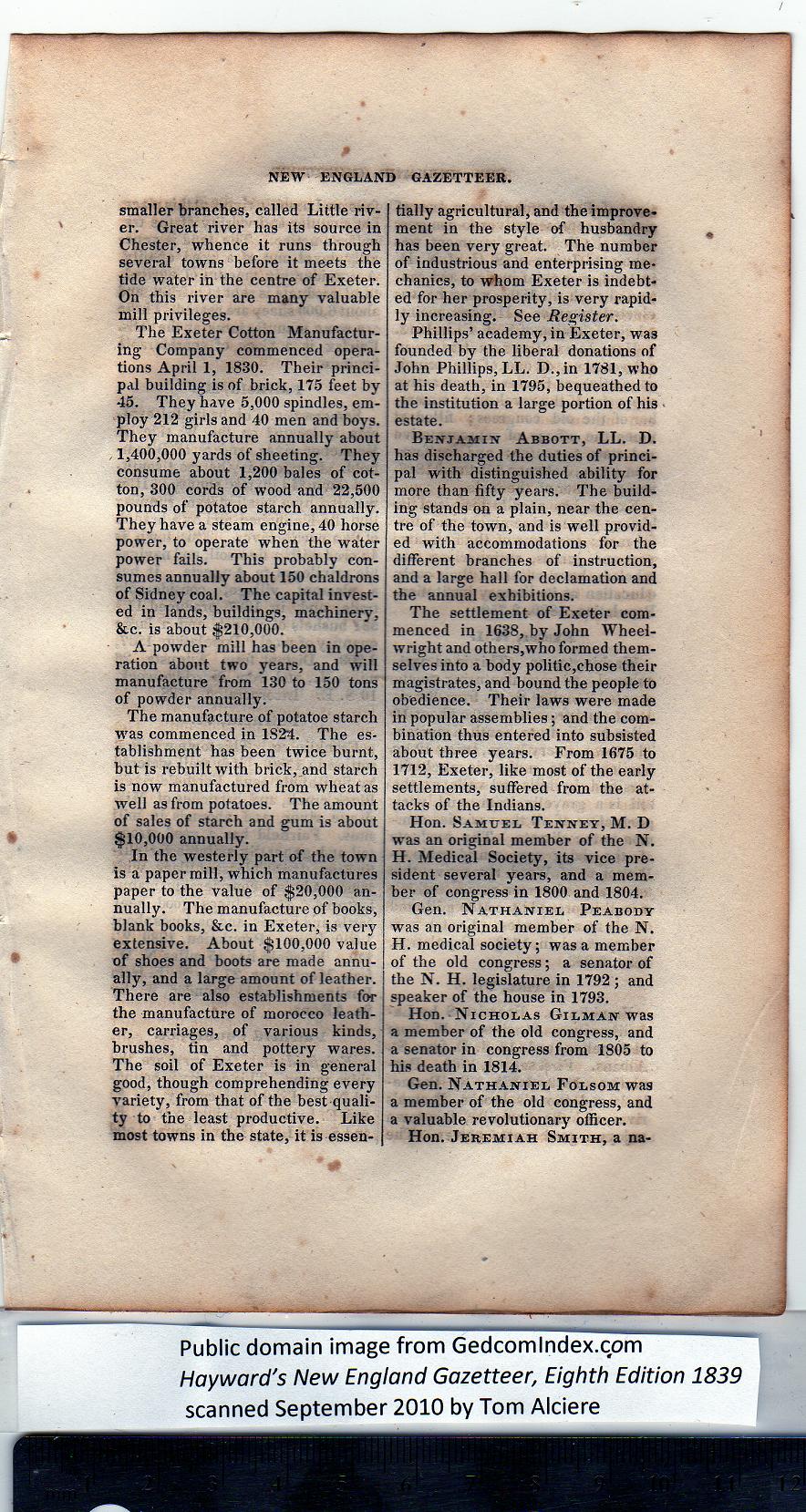|
smaller branches, called Little riv-
er. Great river has its source in
Chester, whence it runs through
several towns before it meets the
tide water in the centre of Exeter.
On this river are many valuable
mill privileges.
The Exeter Cotton Manufactur-
ing Company commenced opera-
tions April 1, 1830. Their princi-
pal building is of brick, 175 feet by
45. They have 5,000 spindles, em-
ploy 212 girls and 40 men and boys.
They manufacture annually about
. 1,400,000 yards of sheeting. They
consume about 1,200 bales of cot-
ton, 300 cords of wood and 22,500
pounds of potatoe starch annually.
They have a steam engine, 40 horse
power, to operate when the water
power fails. This probably con-
sumes annually about 150 chaldrons
of Sidney coal. The capital invest-
ed in lands, buildings, machinery,
&c. is about $210,000.
A powder mill has been in ope-
ration about two years, and will
manufacture from 130 to 150 tons
of powder annually.
The manufacture of potatoe starch
was commenced in 1S24. The es-
tablishment has been twice burnt,
but is rebuilt with brick, and starch
is now manufactured from wheat as
well as from potatoes. The amount
of sales of starch and gum is about
$10,000 annually.
In the westerly part of the town
is a paper mill, which manufactures
paper to the value of $20,000 an-
nually. The manufacture of books,
blank books, &c. in Exeter, is very
extensive. About $100,000 value
of shoes and boots are made annu-
ally, and a large amount of leather.
There are also establishments for
the manufacture of morocco leath-
er, carriages, of various kinds,
brushes, tin and pottery wares.
The soil of Exeter is in general
good, though comprehending every
variety, from that of the best quali-
ty to the least productive. Like
most towns in the state, it is essen-
tially agricultural, and the improve-
ment in the style of husbandry
has been very great. The number
of industrious and enterprising me-
chanics, to whom Exeter is indebt-
ed for her prosperity, is very rapid-
ly increasing. See Register. |
Phillips’ academy, in Exeter, was
founded by the liberal donations of
John Phillips, LL. D.,in 1781, who
at his death, in 1795, bequeathed to
the institution a large portion of his
estate.
Benjamin Abbott, LL. D.
has discharged the duties of princi-
pal with distinguished ability for
more than fifty years. The build-
ing stands on a plain, near the cen-
tre of the town, and is well provid-
ed with accommodations for the
different branches of instruction,
and a large hall for declamation and
the annual exhibitions.
The settlement of Exeter com-
menced in 1638, by John Wheel-
wright and others,who formed them-
selves into a body politic,chose their
magistrates, and bound the people to
obedience. Their laws were made
in popular assemblies; and the com-
bination thus entered into subsisted
about three years. From 1675 to
1712, Exeter, like most of the early
settlements, suffered from the at-
tacks of the Indians.
Hon. Samuel Tenney, M. D
was an original member of the N.
H. Medical Society, its vice pre-
sident several years, and a mem-
ber of congress in 1800 and 1804.
Gen. Nathaniel Peabody
was an original member of the N.
H. medical society; was a member
of the old congress; a senator of
the N. H. legislature in 1792 ; and
speaker of the house in 1793.
Hon. Nicholas Gilman was
a member of the old congress, and
a senator in congress from 1805 to
his death in 1814.
Gen. Nathaniel Folsom was
a member of the old congress, and
a valuable revolutionary officer.
Hon. Jeremiah Smith, a na- |
